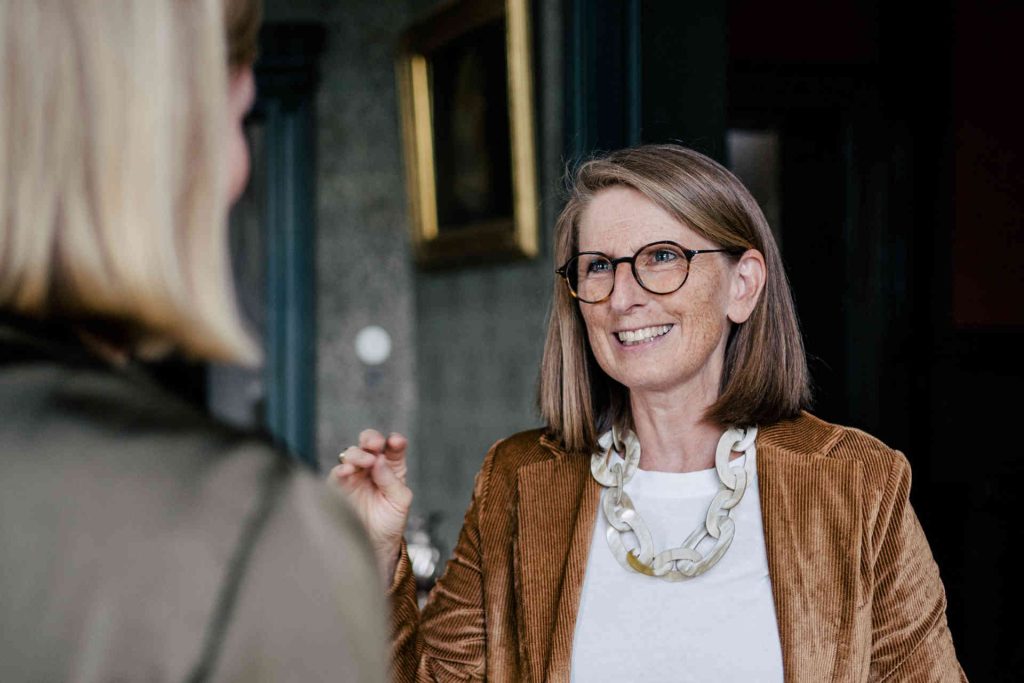

“Consumer behavior is clearly moving toward more conscious enjoyment.”
Christoph Graf, CEO of the VAUX sparkling wine house, and Clementine Perlitt, head of marketing, discuss challenges, opportunities, and prospects.
How did the idea to develop a product like NOUVAUX come about—and why at this particular point in time?
The idea arose around three years ago from a desire to redefine the enjoyment of sparkling wine—in the sense of a low-alcohol product that nevertheless makes no compromises in terms of quality, style, and experience. We wanted to create something “completely unique and new”: a sparkling wine with 2% alcohol by volume, produced using traditional bottle fermentation, which appeals to the senses and retains the best attributes of classic sparkling wine.
What challenges did you face in combining traditional bottle fermentation with 2% alcohol?
The biggest challenge was combining the traditional method with a significantly reduced alcohol content. The base wine was developed specifically for this project under scientific supervision, de-alcoholized using vacuum evaporation, and then rebalanced to achieve an initial alcohol content of 0.5% ABV. Only then was the second fermentation carried out in the bottle—a delicate process in which the aromatic balance and perlage had to be preserved.
What was the most difficult moment in product development?
The VAUX team described NOUVAUX itself as an “almost impossible exercise.” The most difficult moment was creating a product that retained its sensory depth, perlage pressure, and typical VAUX quality despite its minimal alcohol content. The goal was to redefine the “importance of alcohol for enjoyment”—without compromising on quality.
How do you think consumer behavior has changed?
Consumer behavior is clearly moving toward more conscious enjoyment. More and more consumers are looking for drinks with less alcohol and calories—without sacrificing enjoyment or elegance. NOUVAUX is aimed precisely at this development and responds to the growing need for lighter but high-quality alternatives.
Who is the target audience for NOUVAUX – and how does it differ from classic sparkling wine customers?
The target audience is quality-conscious connoisseurs who want to explore new, lighter ways of drinking. NOUVAUX is also aimed at those who want to drink consciously in social situations or avoid high alcohol content without sacrificing style, enjoyment, and sparkling wine culture. The classic VAUX clientele is being supplemented by new consumers.
How do you give a product with reduced alcohol content a “champagne-worthy” value?
Through uncompromising quality in all aspects: unique base wines, traditional bottle fermentation, the finest perlage, clear fruit aromas, and artisanal precision. NOUVAUX brings a high-quality experience to the bottle that meets classic sparkling wine standards—only more moderate.
Why was vacuum evaporation chosen for dealcoholization?
Vacuum evaporation is a particularly gentle process that preserves the wine's aroma. For NOUVAUX, dealcoholization was carried out in collaboration with an experienced specialist in this field. This method guarantees the most authentic, pure-tasting base wine possible – a must for the desired VAUX quality.
The aim was to redefine the “importance of alcohol for enjoyment” – without compromising on quality.
Are there plans for further products in the no-alcohol and low-alcohol segment?
In addition to Nouvaux, we are also very successful in selling the non-alcoholic “Träublein.” This is a completely independent proxy drink. We see great opportunities in this segment. We don't want to reveal any more than that at this stage.
What advice would you give to other winegrowers or sparkling wine producers undertaking similar projects?
A clear concept, uncompromising quality standards, and a willingness to break new ground—these are essential prerequisites. Strong partners and scientific support also play a key role in the implementation of such innovative projects. And: The technical and sensory complexity of such projects should not be underestimated.
What role does the carbon footprint play—and is there sustainable potential in low alcohol?
We don't have specific data on the carbon footprint, but the conscious design of NOUVAUX as a lighter product with low alcohol content offers structural potential for more resource-efficient production methods. The development shows that enjoyment and sustainability can go hand in hand even with sparkling wine – especially when packaging, transport, and production processes are considered holistically.
Since 1868, the sparkling wine producer has been synonymous with exclusive sparkling wines made using traditional bottle fermentation. Originally founded in Berlin, Château VAUX near Metz eventually made its way to Eltville in Germany's Rheingau region. Today, VAUX produces 450,000 bottles annually. The combination of French elegance and German fruitiness makes VAUX sparkling wines unique.
The aim was to redefine the “importance of alcohol for enjoyment” – without compromising on quality.



Christoph Graf, CEO of the VAUX sparkling wine house, and Clementine Perlitt, head of marketing, discuss challenges, opportunities, and prospects.